
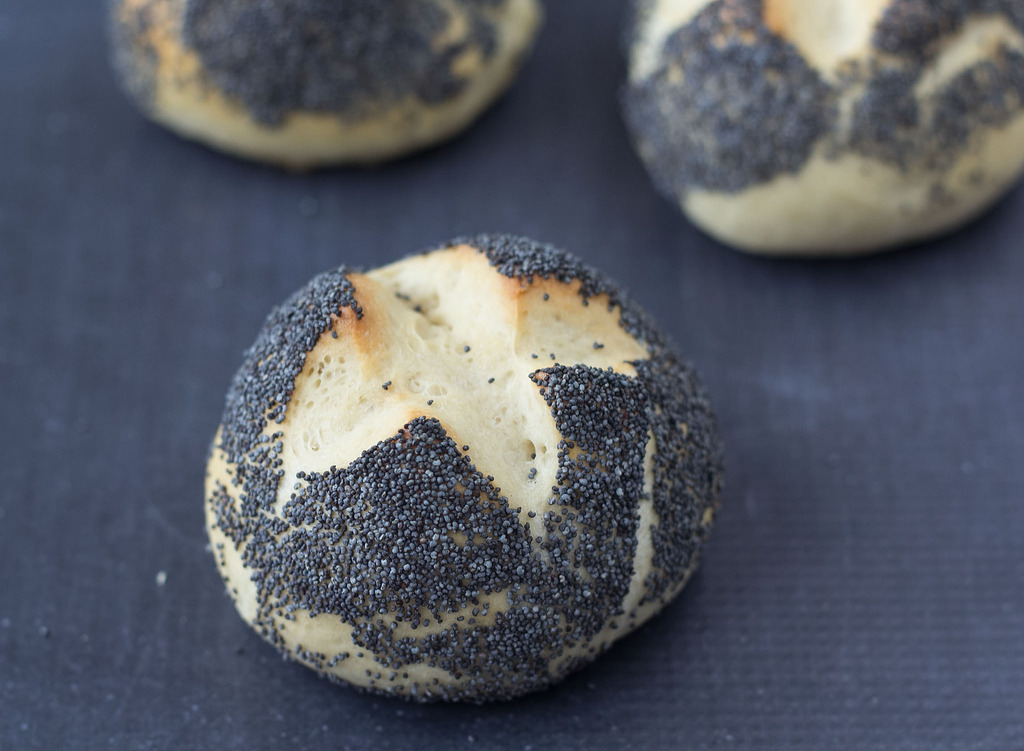
In the weekends it is great if the breakfast is a little extra delicious. Almost every weekend we make some fresh bread which we eat for breakfast both Saturday and Sunday. This recipe we have on this page is one of the many recipes we use as breakfast in the weekends. In Denmark, it is pretty common to serve buns for breakfast. A typical Danish breakfast bun is very crisp and normally called a Rundstykke, which can roughly be translated to a round piece.
See also: My BEST Nordic bread recipes
This recipe is a typical Rundstykke where this particular variant, with the poppy seeds, is called a møllehjul which translated means a mill wheel. The reason for this name is properly because of the way the buns are cut on the top - with good imagination the buns could look like a mill wheel.
The recipe is very similar to other bread recipes and they are pretty easy to make. We normally make a large portion of these buns and save some of them in the freezer. Then we always have some for the lazy weekends where we are not in the mood for any kitchen work. Even though they have been in the freezer they are still very good - you simply just let the buns thaw and then reheat them in the oven for about 5 minutes at 150 C (300 F). We normally serve our breakfast buns together with slices of cheese or ham and some homemade jam or other spread

Ingredients
- 25 g fresh yeast (or equivalent dry yeast)
- 3 dl milk
- 100 g butter
- 1 tsp salt
- 1 tsp sugar
- 550 g all-purpose flour (more if needed)
- 1 egg (for egg wash)
Instructions
- Melt the butter in a sauce pan or in your microwave oven; set aside.
- Use a saucepan or microwave; Heat the milk so it is lukewarm and dissolve the sugar and fresh yeast in the lukewarm milk. If using dry yeast add this together with the flour.
- Add the melted and cooled butter.
- Add the salt and the all-purpose flour stepwise. Knead well. The amount for flour depends on the quality of the flour.
- Leave the dough in a bowl and cover it with a clean tea towel. Set aside and let it rise for about 30 minutes.
- Divide the dough into 12 buns.
- Make an egg wash and brush the buns with it.
- Pour some blue poppy seeds on a plate and gently press the egg brushed sides of the buns down into the seeds.
- Using a sharp knife; cut a cross in the top of the buns. The cut should only scratch the surface. A too deep cut will make the buns open up to much during baking.
- Place the buns on a parchment paper covered oven tray. Cover the buns with plastic wrap or similar and then a tea towel.
- Leave the buns to rise someplace warm for about 30 minutes.
- Bake the buns at 200 C (400 F) for about 10-12 minutes or until they are nice and golden.
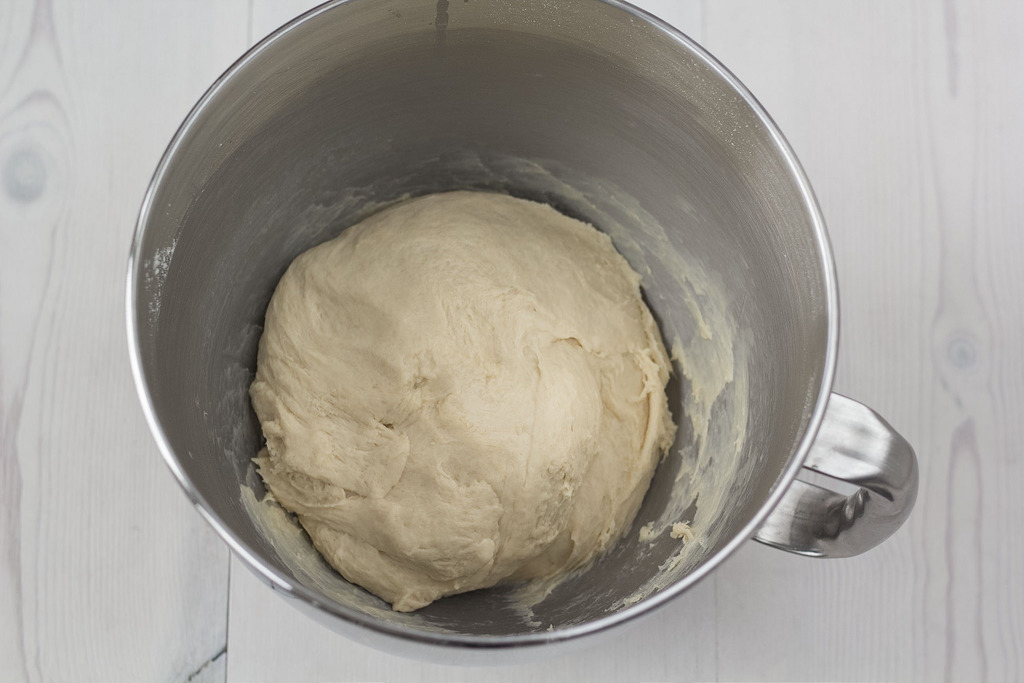

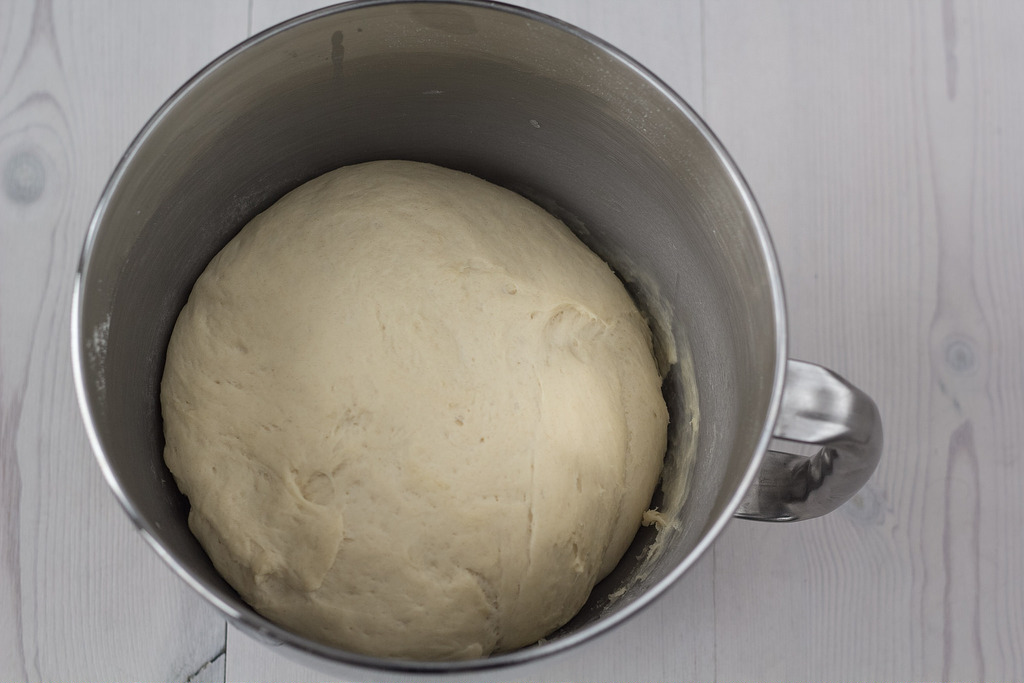
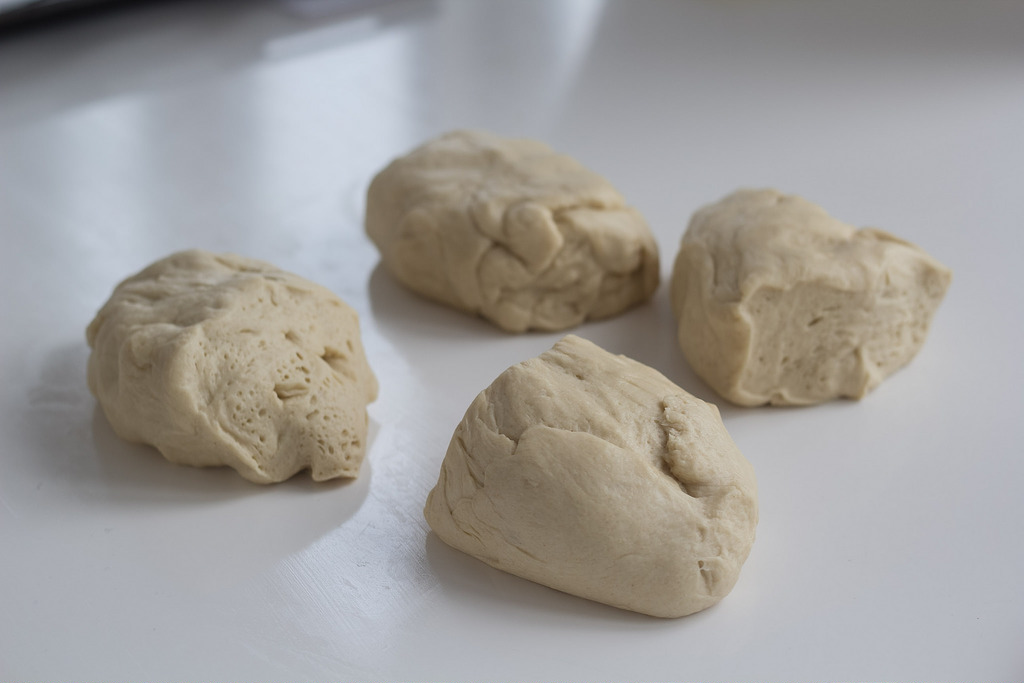

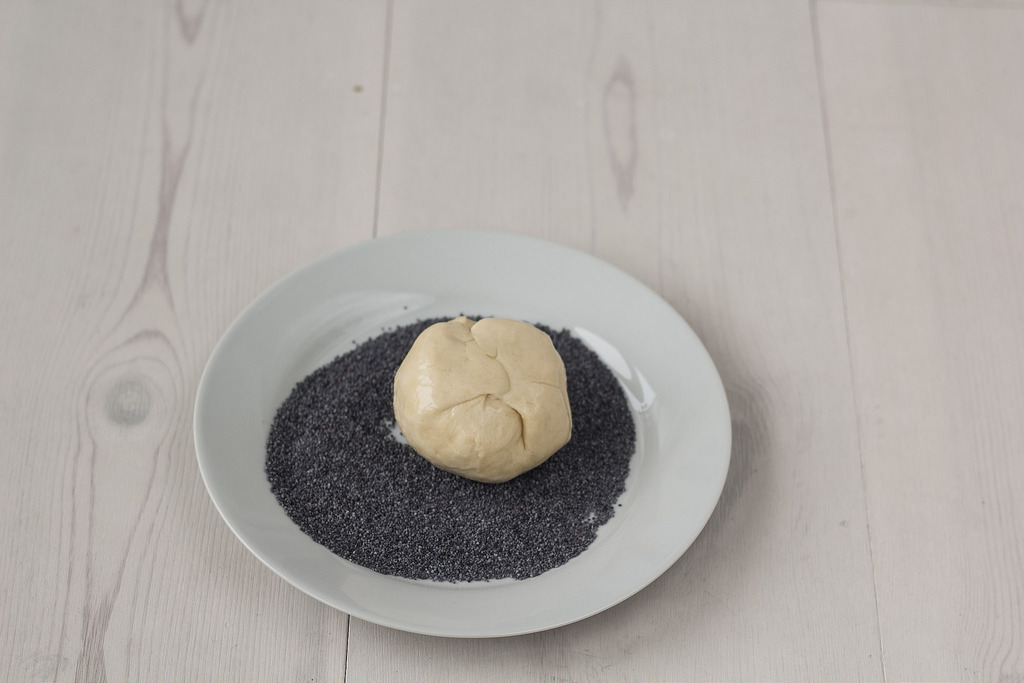
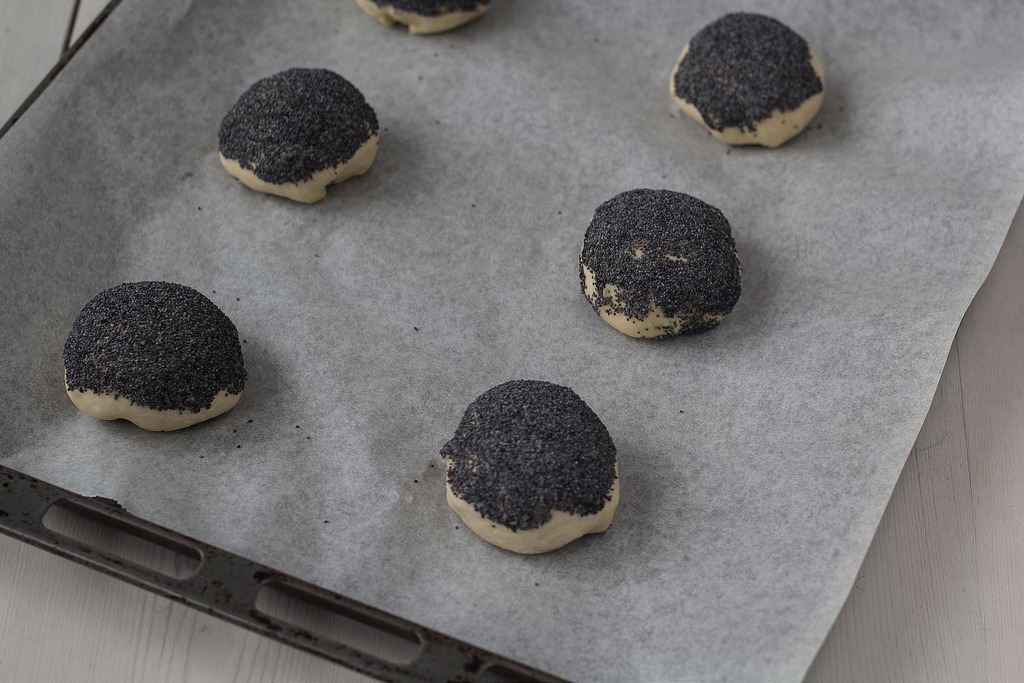
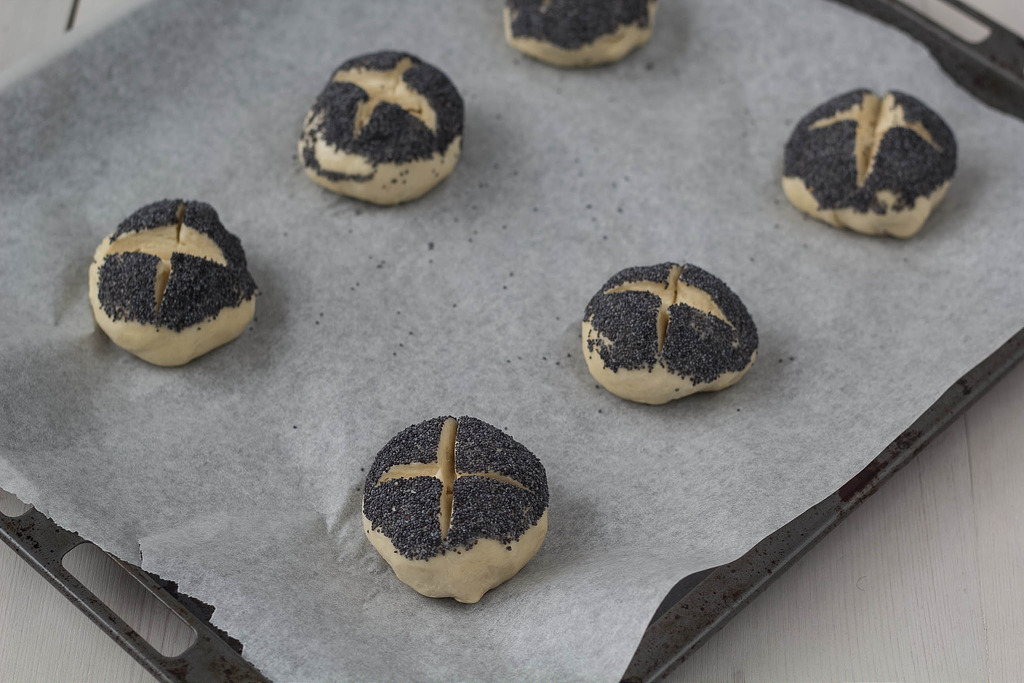
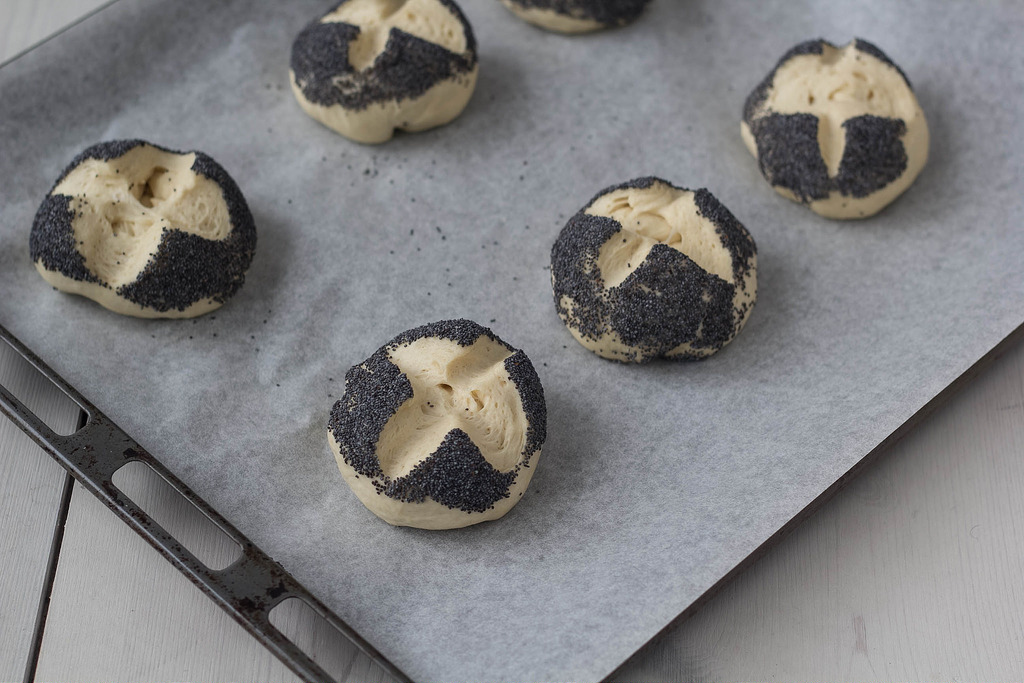
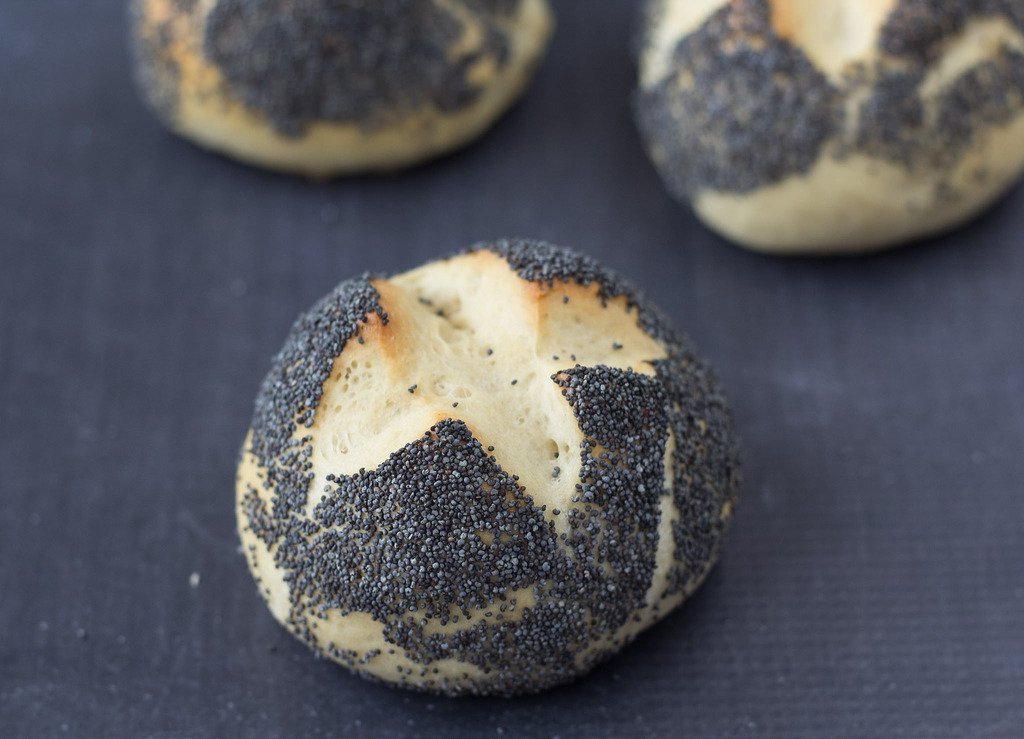
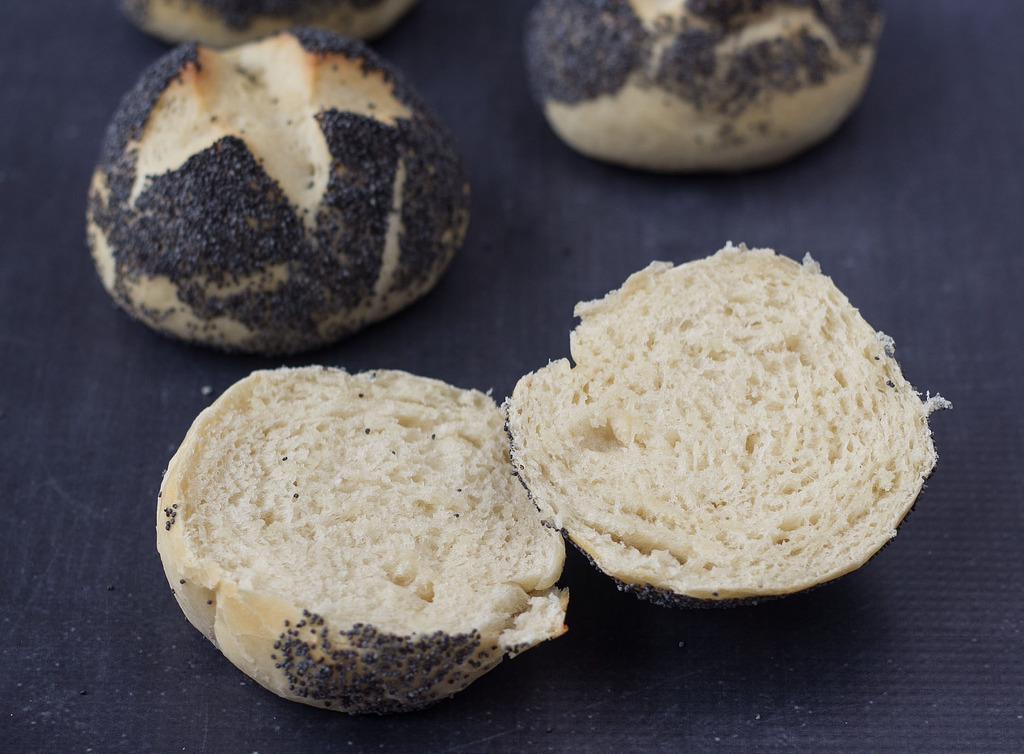
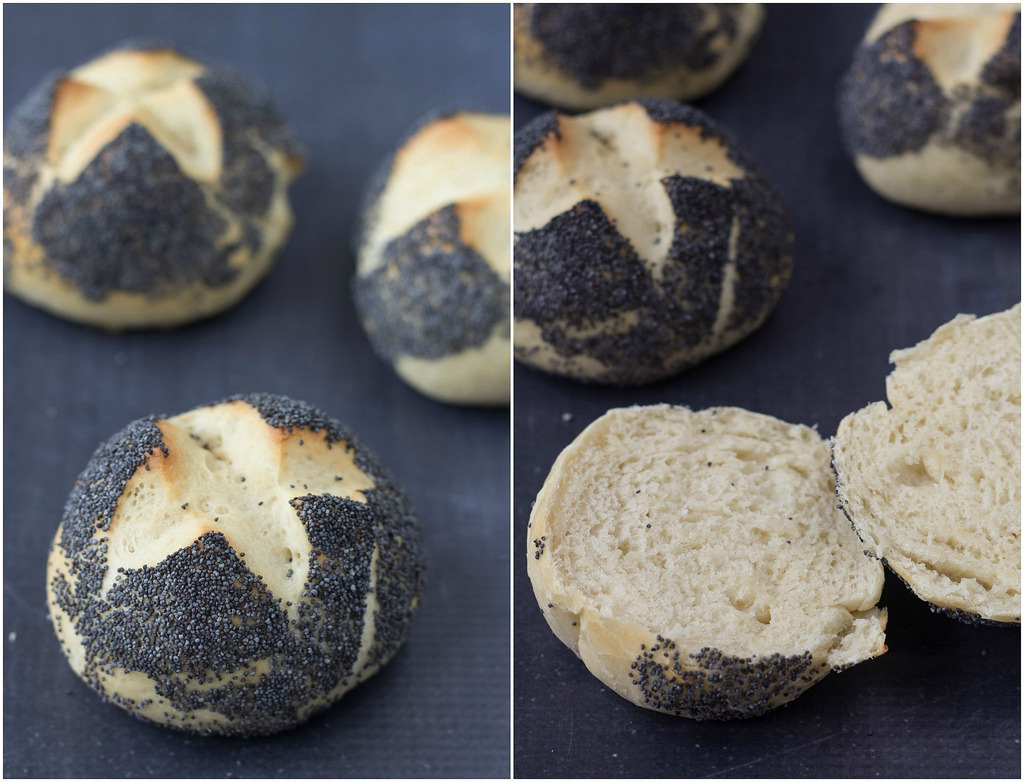
Daniel
Going to surprise my mom with these on her birthday. I can remember walking to the corner bakery and getting them every morning while visiting in Denmark. Eating these with some butter and havarti cheese is divine. Any chance you have a recipe for mackerel in tomato sauce like you can buy in the can over there? Going to need some when I make your rye bread later. Thanks for all the great recipes.
Louise Dam
I'm sure your mom will be so happy! Sorry, I don't have a recipe for mackerel in tomato sauce. Maybe I can make that one day.
Dennis Jørgensen
Mackerel in tomato sauce, I simply use a tin of mackerel in tomato sauce, empty it into a bowl, add 2 tablespoons of a good mayonnaise, here in the UK we tend to use Hellmann's, add some freshly ground pepper and mix well, serve on rye bread, enjoy!
Ariadne
Just discovered your blog, so happy about it :-)
I am looking forward to trying out the recipe, they look delicious! When you say 25g of yeast, do you mean dry yeast? Can't find fresh one easily where I live (in Asia)
Thanks in advance!
Kim Nielsen
Hi. When I'm saying 25g yeast it fresh yeast. Actually I'm not that familiar using dry yeast as all groceries in Denmark have fresh yeast for almost nothing. I guess there is a recipe on the packaging of the dry yeast?
Ariadne
Hi. Thanks for your reply, yes there must be an indication on the package of how much to use per kg of flour. True, in Europe fresh yeast is so easy to find.. (I'm European)
Miss the supermarkets every day.
cheers
Kika
Great recept, simply, quickly and delicious! Perfect! ;)
Thans for rundstykker! :)
Kim Nielsen
You are welcome. I'm just happy that you like the recipe and that you find it delicious. Regards Kim (NordicFoodLiving.com)
Randeep
1g of dry yeast is roughly equivalent to 3g of regular yeast. For this recipe you should aim for 8g of dry yeast.
Marianne Bush
FYI: Found this conversion of wet yeast to dry yeast:
redstaryeast.com/yeast-baking-lessons/yeast-conversion-table
Dei Studman
Great recipes love the traditional toucj
Roda
Can i keep the dough in the fridge and use it the next day?
Kim Nielsen
Yes you can do that. But in that case I would reduce the amount of yeast a little bit.
Roda
Oops just finished making the dough and i just read your reply.Crossing my fingers that it would still be okay by tomorrow. ☺️ thanks for the recipe
Kim Nielsen
No problem - I normally reduce the amount of yeast when doing overnight bread in order to slow the rising process. However, you bread is still fine it will probably just rise a little bit extra. :-)
Annie Phillips
I live in Florida and I miss makral i tomat, so one day in Walmart I found a can with Macral and it is a little messy, but the end result is delish. I clean the fish and take out the center bone, mass them up with ketchup and Mayonaise and it is great. Try it.
Annie Phillips
Kim Nielsen
Thanks for reminding me - I need to have a recipe for makral i tomat on my site :-) Regards Kim (NordicFoodLiving.com)